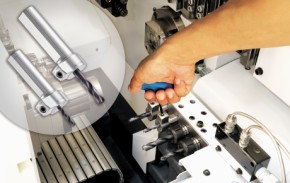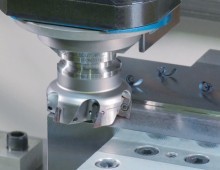BIG KAISER Introduces First Tooling Improvement for Swiss Lathes in 30 Years

Hoffman Estates, IL – BIG KAISER, a global leader in premium high-precision tooling systems and solutions for the metalworking industries, introduces Hydraulic Chucks for Swiss Lathes, the first improvement to this technology in more than 30 years. These tool holders use a single wrench, which makes for a quick and easy change of the cutting tools on a gang slide.
"We are excited to bring our proven hydraulic tool holder clamping technology to the Swiss-type lathe market," Vice President of Sales and Engineering Jack Burley, said. "As Swiss lathe operators know, changing over cutting tools can be difficult and time consuming, which is obviously not ideal in production environments. These holders provide another faster, simpler option."
Often used for mass production of small items such as automobile parts, watch parts, medical parts, communication and digital equipment parts, Swiss Lathes have many fixed and rotating tools in a narrow space, making it difficult to replace a cutting tool inside the machine. To minimize machine downtime and provide operator safety, the Hydraulic Chucks use a simple hex wrench that requires only 2-3 turns for both clamping and unclamping.
To help maintain good repeatability and ease of operability, once a hydro-chuck is centered, the runout will not vary, even if a cutting tool is changed repeatedly. Runout of fewer than 3 microns at 4 times diameter can be achieved.
High-precision cutting with Hydraulic Chucks is achieved on the automatic lathe with a clamping range of ø4-8mm. They are long lasting, maintenance free and the rigidity is greatly improved by the short projection length and dual pressure points.
Hydraulic Chucks have a standard pipe thread for coolant through connection and are available for most Citizen and Star machines with 3/4 in or 22 mm straight shank.
To learn more about these and other solutions for the medical industry, contact us or check out our latest High Performance Tooling Solutions catalog.





Did you find this interesting or helpful? Let us know what you think by adding your comments or questions below.